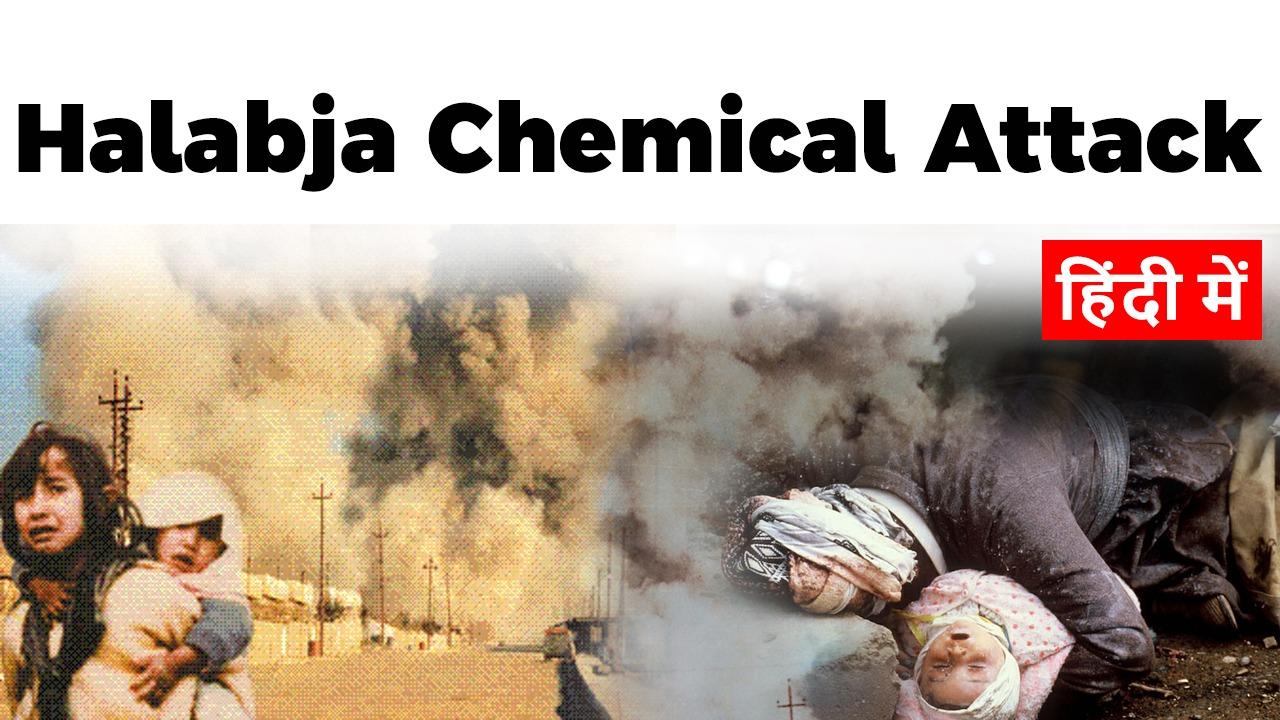Table of Contents
BACKGROUND
- Northern Iraq was an area of general unrest during the early stage of the Iran–Iraq War, with the Kurdistan Democratic Party (KDP) and Patriotic Union of Kurdistan (PUK) militias joining forces, with Iranian support, in 1982 and 1983, respectively.
- From 1985, the Iraqi Ba’athist regime under Saddam Hussein decided to eradicate pockets of Kurdish resistance in the north and strike down the rebels by all means possible, including large-scale punishment of civilians and the use of chemical weapons.
HALABJA ATTACK
- The Halabja event was also part of Iraqi efforts to counter-attack Kurdish and Iranian forces in the final stages of Operation Zafar 7.
- An estimated 5,000 people, mostly women and children, were killed when Iraqi jets dropped poison gas on the town.Many others died later of cancer and other illnesses, and the legacy of chemical contamination persists.
- The attack on Halabja on 16 March 1988 was the most notorious act of chemical warfare in modern times.
ATTACK
- The attack was part of the Al-Anfal Campaign in northern Iraq, It took place 48 hours after the fall of the town to the Iranian Army.
- A United Nations (UN) medical investigation concluded that mustard gaswas used in the attack, along with unidentified nerve agents.
- The attack killed between 3,200 and 5,000 people and injured 7,000 to 10,000 more, most of them civilians.

ATTACK
- The exact number killed is not known, but ran into the thousands as townspeople choked on a mixture of mustard gas and nerve agents.
- Researchers believe the contamination passed not only into the soil and water, but also into the gene pool, with abnormal numbers of children since being born with genetic malformations.
AFTERMATH
- The first images after the attack were taken by Iranian journalists who later spread the pictures in Iranian newspapers.
- The Iraqi government did not publicly comment on the use of chemical weapons at Halabja until March 23 and early statements by Iraqi officials on the matter were inconsistent.
- Although Iraq ultimately denied responsibility for the attack and blamed it on Iran, its initial silence and the fact that Halabja was never a major part of Iraq’s wartime propaganda campaign against Iran raises questions about the sincerity of this deflection. International response at the time was muted.
AFTERMATH
- The United States intelligence and government suggested that Kurdish civilians were not a deliberate target, and even that Iran was indeed responsible.
- The Halabja attack has been recognized as a distinct event of the Anfal Genocide conducted against the Kurdish people by the Iraqi regime under Saddam Hussein.
- The Iraqi High Criminal Court recognized the Halabja massacre as an act of genocide on March 1, 2010. The attack was also condemned as a crime against humanity by the Parliament of Canada.In 2010, high-ranking Iraqi official Ali Hassan al-Majid was found guilty of ordering the attack, sentenced to death.
World History | Free PDF






















 WhatsApp
WhatsApp